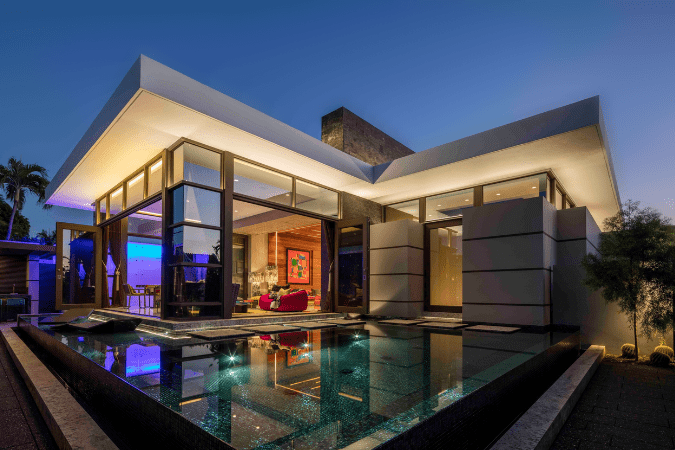Introduction:
The world of architecture and interior design is a dynamic realm where creativity converges with functionality to shape the environments we inhabit. Architects and interior designers, while distinct in their roles, share a symbiotic relationship that contributes to the creation of visually stunning and functionally efficient spaces. This collaboration is not just about aesthetics but involves a seamless integration of structural prowess and design finesse. In this exploration, we delve into the harmonious partnership between architects and interior designers, understanding how their collective expertise results in spaces that transcend the ordinary.
Distinct Roles, Unified Vision:
At its core, architecture lays the foundation for a structure, considering structural integrity, spatial planning, and environmental impact. Architects conceptualize and execute the overall design of a building, considering its purpose, form, and the surrounding landscape. Once the architectural framework is established, interior designers step in to enhance the space’s functionality, aesthetics, and user experience.
Interior designers focus on the finer details—colors, textures, furnishings, and lighting—to create an atmosphere that aligns with the intended purpose of the space. The collaboration begins with a shared vision, where architects and interior designers work in tandem to ensure a cohesive and holistic design that seamlessly marries the exterior and interior aspects of a structure.
Seamless Flow and Functionality:
The success of any architectural project lies in its ability to provide a seamless flow between spaces. Architects meticulously plan layouts, considering factors such as traffic flow, structural soundness, and the overall user experience. Interior designers, understanding the human element, build upon this foundation to create interiors that not only look beautiful but also function effortlessly.
For instance, an architect might design a building with open, interconnected spaces, and an interior designer will then optimize these spaces for specific functions—ensuring that each room serves its purpose while contributing to the overall harmony of the design. This collaborative approach results in spaces that not only please the eye but also facilitate practical and comfortable living or working environments.
Aesthetics and Atmosphere:
While architects establish the bones of a structure, interior designers breathe life into the spaces within. A well-coordinated collaboration ensures that the exterior and interior elements complement each other seamlessly. Architects consider the overall aesthetics of a building, and interior designers extend this vision into the interiors, selecting materials, colors, and furnishings that harmonize with the architectural style.
The synergy between architects and interior designers is particularly evident in projects where a specific theme or design concept is pursued. Whether it’s a modern, minimalist residence or a classic, opulent hotel, the cohesive efforts of architects and interior designers bring a unified vision to fruition, creating spaces that evoke a specific atmosphere and resonate with the intended audience.
Innovation and Future Trends:
The dynamic partnership between architects and interior designers also plays a crucial role in driving innovation within the design industry. As architecture evolves to meet changing societal needs and environmental considerations, interior designers adapt their approaches to align with these advancements. Sustainable design, for example, is a growing trend that requires a collaborative effort between architects and interior designers to integrate eco-friendly materials and energy-efficient solutions seamlessly.
Moreover, the embrace of technology, such as smart home systems, is another area where architects and interior designers collaborate to create spaces that are not only aesthetically pleasing but also technologically advanced and user-friendly.
Conclusion:
In the world of design, the collaboration between architects and interior designers is an essential dance of creativity and functionality. Together, they weave a tapestry of spaces that transcend the ordinary, creating environments that inspire, comfort, and serve their intended purposes. As trends evolve and societal needs change, this seamless partnership continues to be the driving force behind the creation of exceptional and timeless spaces that leave a lasting impact on those who experience them.




